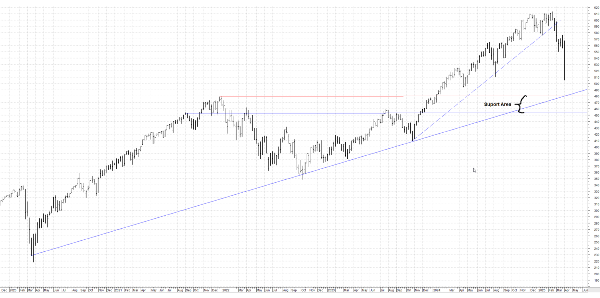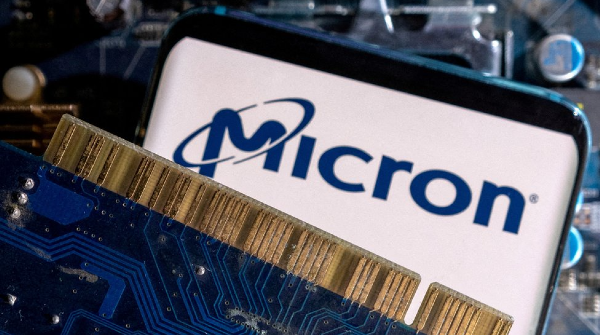The S&P 500 has been a cornerstone of the stock market for decades, reflecting the performance of 500 of the largest publicly traded companies in the United States. If you've been paying attention to market trends over the past year, you've likely heard discussions about its Price-to-Earnings (P/E) ratio. This metric, a key indicator of valuation, has sparked debates among investors regarding whether the index is "expensive."
Historical Perspective: Why the Current P/E Ratio Matters
The S&P 500's P/E ratio has historically fluctuated, typically ranging between the high teens and low 20s during periods of economic stability. However, in recent times, the index reached P/E levels in the low 30s—raising concerns among cautious investors about overvaluation.
Historically, a P/E ratio in the high teens to low 20s reflects a fair valuation for the market under average economic conditions. These levels indicate investor confidence in steady earnings growth. However, when P/E ratios soar above 30, it often signals that stocks may be overpriced, prompting some investors to hesitate.
Navigating Market Corrections
A notable pullback in the S&P 500's valuation occurred recently, with the P/E ratio dropping from 30+ to approximately 23-25. This shift was driven by various factors, including economic concerns and tariff-related uncertainty. While a lower P/E ratio generally signals more attractive valuations, it's essential to understand the underlying reasons for such corrections—often tied to economic slowdowns or market instability.
Historical data reveals that the S&P 500 rarely dips below a P/E of 20. Even during challenging periods like the bear market of 2022, the ratio hovered around 19, underscoring the resilience of the index.
Avoiding Emotional Investing and Timing Pitfalls
One of the challenges faced by investors is the tendency to avoid buying during market corrections, fearing further declines. However, long-term success in investing often requires a disciplined approach—such as Dollar-Cost Averaging (DCA)—to mitigate the impact of emotional decision-making.
For instance, a P/E ratio of 23 might appear slightly higher than historical averages, but it remains within a reasonable range when considering post-1990 trends. Importantly, the stock market rewards long-term commitment. Data from 2015-2018 shows consistent growth despite periodic corrections, highlighting the importance of staying invested.
Lessons from History: The Case for Long-Term Investment
Looking back at the market's performance over the past decades, a few key takeaways emerge:
- Higher P/E Ratios Are Now More Common: The prevalence of 401(k)s and increased participation in equity markets has contributed to higher average P/E ratios compared to pre-1990 periods.
- 10-Year Outlooks Matter: Short-term fluctuations, including corrections of 10-20%, should not deter investors who have a horizon of 5-10 years or more. Staying invested through these dips often leads to substantial gains.
- Avoid Justifying Non-Investment: Finding reasons to avoid buying into the market, even at fair valuations, can harm long-term financial goals. Historically, moments of average valuation have led to solid returns when viewed through a long-term lens.
Final Thoughts
The S&P 500's valuation journey offers valuable insights for investors. While it's natural to be cautious during periods of high P/E ratios, understanding historical trends and maintaining a long-term perspective can pave the way for successful investing. Whether you're considering starting or expanding your portfolio, keeping emotions in check and focusing on time-tested strategies like DCA can help you make informed decisions that align with your financial goals.
https://youtu.be/N7CXDTbb3wY?si=oSTVBgZlt6vL9mCk































The S&P 500 has been a cornerstone of the stock market for decades, reflecting the performance of 500 of the largest publicly traded companies in the United States. If you've been paying attention to market trends over the past year, you've likely heard discussions about its Price-to-Earnings (P/E) ratio. This metric, a key indicator of valuation, has sparked debates among investors regarding whether the index is "expensive."
Historical Perspective: Why the Current P/E Ratio Matters
The S&P 500's P/E ratio has historically fluctuated, typically ranging between the high teens and low 20s during periods of economic stability. However, in recent times, the index reached P/E levels in the low 30s—raising concerns among cautious investors about overvaluation.
Historically, a P/E ratio in the high teens to low 20s reflects a fair valuation for the market under average economic conditions. These levels indicate investor confidence in steady earnings growth. However, when P/E ratios soar above 30, it often signals that stocks may be overpriced, prompting some investors to hesitate.
Navigating Market Corrections
A notable pullback in the S&P 500's valuation occurred recently, with the P/E ratio dropping from 30+ to approximately 23-25. This shift was driven by various factors, including economic concerns and tariff-related uncertainty. While a lower P/E ratio generally signals more attractive valuations, it's essential to understand the underlying reasons for such corrections—often tied to economic slowdowns or market instability.
Historical data reveals that the S&P 500 rarely dips below a P/E of 20. Even during challenging periods like the bear market of 2022, the ratio hovered around 19, underscoring the resilience of the index.
Avoiding Emotional Investing and Timing Pitfalls
One of the challenges faced by investors is the tendency to avoid buying during market corrections, fearing further declines. However, long-term success in investing often requires a disciplined approach—such as Dollar-Cost Averaging (DCA)—to mitigate the impact of emotional decision-making.
For instance, a P/E ratio of 23 might appear slightly higher than historical averages, but it remains within a reasonable range when considering post-1990 trends. Importantly, the stock market rewards long-term commitment. Data from 2015-2018 shows consistent growth despite periodic corrections, highlighting the importance of staying invested.
Lessons from History: The Case for Long-Term Investment
Looking back at the market's performance over the past decades, a few key takeaways emerge:
Final Thoughts
The S&P 500's valuation journey offers valuable insights for investors. While it's natural to be cautious during periods of high P/E ratios, understanding historical trends and maintaining a long-term perspective can pave the way for successful investing. Whether you're considering starting or expanding your portfolio, keeping emotions in check and focusing on time-tested strategies like DCA can help you make informed decisions that align with your financial goals.
https://youtu.be/N7CXDTbb3wY?si=oSTVBgZlt6vL9mCk